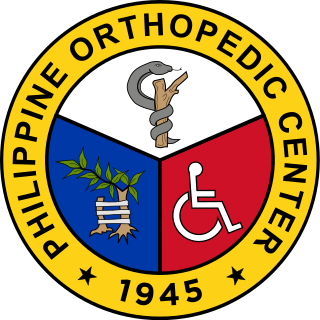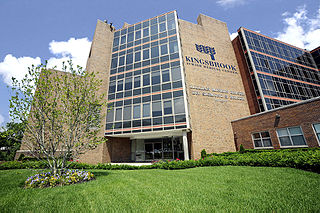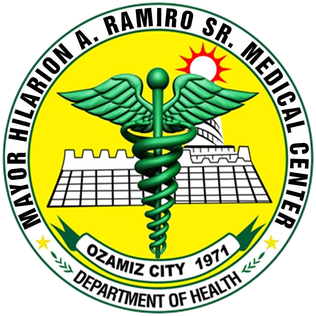
Monash Medical Centre (MMC) is a teaching hospital in Melbourne, Australia. It provides specialist tertiary-level healthcare to Melbourne's south-east.

The Department of Health is the executive department of the government of the Philippines responsible for ensuring access to basic public health services by all Filipinos through the provision of quality health care, the regulation of all health services and products. It is the government's over-all technical authority on health. It has its headquarters at the San Lazaro Compound, along Rizal Avenue in Manila.

The Ospital ng Maynila Medical Center is a 300-bed non-profit tertiary, general and training hospital in Malate, Manila, Philippines. It is the laboratory hospital of health science students enrolled at the Pamantasan ng Lungsod ng Maynila, one of the Philippines' universities. It is also one of the six district hospitals of the City of Manila, catering its 5th district, which consists of Malate, Ermita, Intramuros, Port Area, San Andres, and the southern portion of Paco.

The Dr. Jose N. Rodriguez Memorial Hospital (DJNRMH), formerly known as Central Luzon Sanitarium, and also called as the Tala Leprosarium, was established in 1940, to accommodate patients with Hansen's Disease in the entire Luzon region in the Philippines. It is currently situated within the district of Tala, in Caloocan, Metro Manila, and occupies 130 hectares of land area, from the original 808 hectares. The reduction of land area was to accommodate previous homeless treated patients who eventually settled and established their own community, called Tala.

The Tondo Medical Center, also known as Tondo Med, is a 300-bed capacity tertiary public medical center established in 1971, under the supervision and control of the Department of Health (DOH). It is located on North Bay Boulevard, Tondo, Manila, Philippines. Tondo Med has eight hospital departments, all of which are currently accredited with their respective specialty societies except for EENT and Radiology which are still in the process of accreditation with the DOH.
Health care in the Philippines varies with private, public and barangay health centers. Most of the national burden of health care is provided by private health providers, with the cost shouldered by the state or by patients.

The Regional Institute of Medical Sciences (RIMS) was established on 14 September 1972 in the name of the Regional Medical College. It is situated in a locality at Lamphelpat in Manipur, India. It is run by a society named "North Eastern Regional Medical College Society" which was duly registered under the Manipur Societies Registration Act, 1989.

Vicente Sotto Memorial Medical Center (VSMMC) is a government-owned hospital in Cebu City, Philippines.

The Southern Philippines Medical Center (SPMC) is the largest government hospital under the Department of Health of the Republic of the Philippines. It is located at the JP Laurel Ave, Bajada, Davao City. It began as the Davao Medical Center. Its name was changed on November 19, 2009, by Republic Act 9792.

The Philippine Orthopedic Center is a 700-bed tertiary special hospital under the Department of Health of the Philippines, specializing in the treatment of musculoskeletal disorders and serves as a center for trauma and orthopedics. The hospital is located at Banawe Avenue corner Maria Clara Street, Santa Mesa Heights, Quezon City.
Mental health in the Philippines is a survey of the status of psychological, psychiatric, and emotional health care in the Philippines from both past and present programs.

Kingsbrook Jewish Medical Center was a 303-bed full-service community teaching hospital with an estimated 2,100 full-time employees, located in the neighborhood of East Flatbush in Brooklyn, New York. The hospital was made up of a complex of eight conjoined buildings which are dispersed over a 366,000 square foot city block.

The Eastern Visayas Medical Center (EVMC) is a tertiary level teaching and training government hospital in the Philippines.

The Philippine Children's Medical Center is a government-run children's hospital in Quezon City, Metro Manila, Philippines. The hospital as a government-owned and controlled corporation is attached to the Department of Health.

Baguio General Hospital and Medical Center (BGHMC), also known as Baguio General Hospital (BGH), is a hospital in Baguio, Philippines. It is the largest government funded tertiary hospital in the Northern Luzon Region.
West Visayas State University Medical Center is a government owned hospital operated under the West Visayas State University. It was established in the 1940s after which when the Cacho family of Panay Electric Company (PECO) sold their property to the Philippine Women's College, then later to the Lopez family turning it into Don Benito Lopez Memorial Hospital.

The Mayor Hilarion A. Ramiro Sr. Medical Center (MHARS-MC) is a tertiary government hospital in Ozamiz, Misamis Occidental, Philippines. It is managed under the Department of Health.

The Corazon Locsin Montelibano Memorial Regional Hospital (CLMMRH) is a tertiary level government hospital in the Philippines with an authorized bed capacity of one thousand (1000). It is located along Lacson Street, Bacolod, Negros Occidental.
The Western Visayas Medical Center (WVMC) is a tertiary level government hospital in the Philippines with an authorized bed capacity of seven hundred (700). It is located along Q. Abeto Street, Mandurriao, Iloilo City, Iloilo.
The Don Jose S. Monfort Medical Center (DJSMMC) is a government hospital in the Philippines It is located in Barotac Nuevo, Iloilo.















